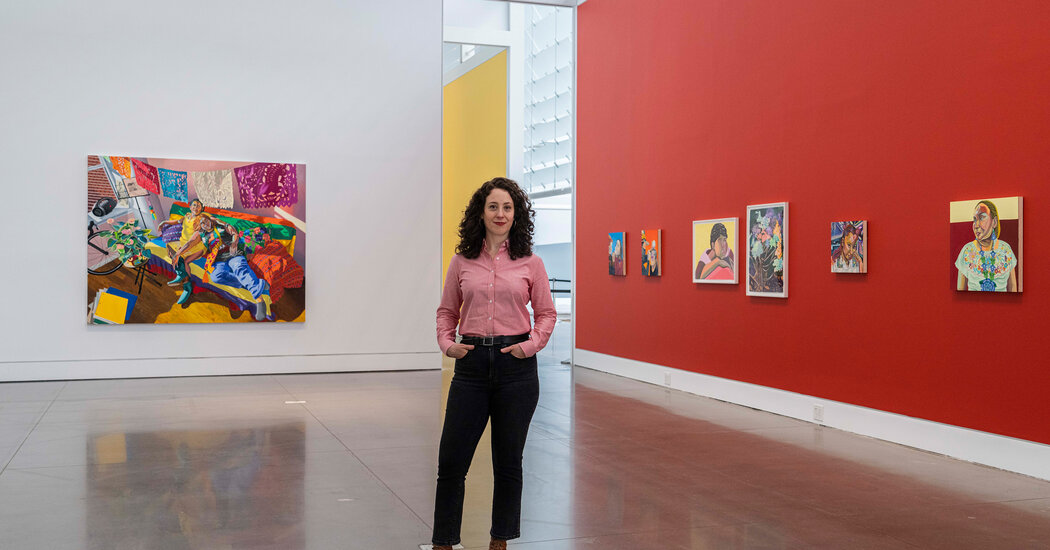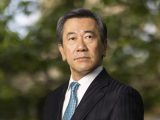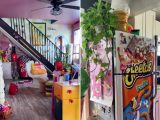
‘Ask Me What I’m Painting’: The Changing Role of the Artist in Residence
04/26/2023This article is part of our Museums special section about how art institutions are reaching out to new artists and attracting new audiences.
At the Queens Museum, they’re getting ready for a show. It’s a Monday afternoon in early spring, and canvases of various sizes are lined up along the 14-foot-high wall of Gallery 6, one of six exhibition spaces in the museum, in the New York City Building that was constructed for the 1939 World’s Fair.
A gaggle of curatorial staffers and volunteers gathers around an iPad on a worktable. They’re examining the layout for the 1,144-square-foot space and an adjoining gallery of similar size, discussing how to best display the works of Aliza Nisenbaum — who happens to be standing nearby, smiling as she watches the exhibition coming together.
“It’s my first solo show in New York,” she said. “I’m so excited.”
Although Ms. Nisenbaum is an accomplished artist — her works have been exhibited in the Tate Liverpool and the Minnesota Institute of Art, among others — this is a show that, at other institutions, might never have happened.
Ms. Nisenbaum, a native of Mexico who now lives in New York, is an artist in residence at the Queens Museum. Her show, scheduled to run through Sept. 10, represents the culmination of two years of work during her residency, which in turn grew out of her decade-long involvement with Corona, the neighborhood in Queens.
Titled “Queens, Lindo y Querido,” (Beautiful and Beloved), the show features Ms. Nisenbaum’s exuberant, colorful paintings of Corona residents, many of them from Mexico and Central America, whom she began meeting in 2012 when she started volunteering for a local immigrant aid organization, teaching art history and English classes.
The show is also an example of how the concept of an artist in residence is changing — starting with the fact that at most museums, the honor of a solo show is not typically bestowed upon a resident artist.
“For museums, which tend to be relatively conservative, that might have seemed risky in the past,” said Mary Ceruti, executive director of the Walker Art Center in Minneapolis.
That’s been changing, however, as museums and other art institutions try to forge closer relationships with the communities that surround them.
“I think we are all creating more welcoming, less intimidating spaces,” said Susan Hapgood, executive director of the International Studio & Curatorial Program, a Brooklyn-based international artist residency program. “We’re trying to make the viewing experience more transparent and accessible. Residency programs can do that well by putting the artist in closer contact with the audience the institution serves.”
Traditionally, a residency would provide a sort of artistic sanctuary for creative individuals. The idea, some historians say, dates to the Renaissance. Starting in the 1400s, Cosimo de’ Medici, the patriarch of the powerful merchant family known for its patronage of the arts, invited artists and philosophers to his villa to spend time thinking, creating and conducting research without outside pressures.
A similar motivation was behind the artist colonies in the United States and Britain in the late-19th and early-20th centuries. Many of these residency programs were in rural areas, spurred by an idea that artists needed an escape from the industrialized world.
In recent years, the residency concept has changed yet again. Many of the museums, universities and other institutions that offer programs aren’t extending artists an invitation to escape from society, but rather to engage with it.
“In my mind, the most important concept for an artist-in-residence program is the interaction of the visiting artist with the community,” said Nancy Campbell, professor emeritus at Mount Holyoke College and the founder of the college’s Printmaking Workshop, a residency program. “The personal contact, the interaction of the visiting artist with the community, whether it’s a museum or a university, is the key.”
She acknowledges that not all artists will do their best work in that setting. “Some thrive with the greater interaction,” she says. “Others prefer the isolated, personal, quiet studio.”
While some might opt to pursue their muse in bucolic seclusion, most artists recognize the significance of interaction for their careers.
Amanda Lee, an assistant professor in the Department of Art and Design at Utah State University, said residency programs are important because they “offer the artist new audiences and opportunities to conduct research or make physical work, all of which lead to a healthy art practice.”
Like anyone else, artists have to make a living. In that respect, said Professor Lee — also a multimedia artist, whose work has been exhibited in prominent West Coast galleries — residency programs can offer “a lifeline” at every stage of an artist’s career. Emerging or young artists might get mentorship with senior curatorial staff; those with parenting responsibilities might get support with child care.
Duration, stipends and accommodations for residency programs vary widely. Professor Lee said she has done residencies that last a week. Ms. Nisenbaum has been a resident at the Queens Museum for two years. She was also provided studio space and a stipend.
At the Art Gallery of Ontario, in Toronto, each artist gets a $10,000 stipend (roughly $7,500 in U.S. currency), plus $3,000 to cover expenses, for a residency lasting from six to 10 weeks. Those terms are not carved in stone, however.
“We’re super flexible,” said Stephan Jost, the gallery’s director and chief executive. “A residency is fundamentally about a relationship between the institution and the artist and the community. We don’t want the artist worrying about their bills. Rather, we want them to be engaged in the creative process and in helping to serve that audience.”
Mr. Jost, who is also the second vice president and secretary of the American Alliance of Art Museums, said he believes that institutions need to manage their expectations with residents. “You have to be open,” he said. “Sometimes the residency results in a major acquisition, publication or exhibition. Sometimes it results in an idea that might take 10 years to reach fruition.”
Not only are the outcomes of an artist’s time in residency changing, so are the residents themselves.
Case-in-point: Eric Elshtain, who can often be found in the main hall of the Field Museum of Natural History in Chicago, sitting behind his 1943 Smith-Corona typewriter next to a sign that reads “Ask Me What I’m Writing.”
Mr. Elshtain is the Field’s poet in residence, a position he proposed to the museum in 2017.
“I just came in with a pretty loosely structured idea,” he said. “Basically, I said, ‘I’ll be out in public interacting with visitors, I’ll work on my own poetry, I’ll facilitate poetry competitions and organize workshops.’ The Field said, ‘Do what you’d like to do, and we’ll support you.’”
Mr. Elshtain does not receive a stipend, but he does get office space and unlimited access to the museum’s collection, and he has received funding from the Poetry Foundation.
His residency has produced tangible results: In addition to organizing a quarterly workshop, nine of the approximately 150 poems he has written during his open-ended residency are now displayed in the museum, next to the objects and exhibits that inspired them.
Recently, the Metropolitan Museum of Art announced a new African art residency for its Michael C. Rockefeller Wing. Eileen Musundi, the head of exhibitions at the National Museums of Kenya, was appointed to the four-month residency. The goal is not for Ms. Musundi to create art; she is to curate it. A statement from the museum said that she will develop a proposal “for a traveling loan exhibition of works from the Met collection to Nairobi as well as developing and leading a public education program.”
Similarly, the residency program at the Fabric Workshop and Museum in Philadelphia has in recent years expanded beyond textile artists to include sculptors, painters, musicians, filmmakers — even a cabaret performer. The workshop’s eight residents work closely with senior staff on their ideas.
“It’s a nimble structure so that we can do what’s needed for the project and the process,” said DJ Hellerman, the museum’s chief curator. “We don’t necessarily need to think of an exhibition as the final outcome.”
At the Queens Museum, Ms. Nisenbaum’s solo exhibition is indeed a final outcome of her time with the institution and in Corona. Perhaps her best-known work is “The Ones Who Make It Run,” a painting of 16 airport workers that she completed in 2022. It will be adapted into a mosaic mural at Delta Terminal C in La Guardia Airport this year.
Ms. Nisenbaum also taught art classes for beginners, which evolved into a master class for a number of promising local residents. She wanted to showcase those talents as part of her exhibition, so 28 paintings by her students will be featured in the museum’s galleries alongside hers. “I’ve always wanted to do something like that,” she said.
Asked about her time as a resident artist at the museum, she smiled and looked out at the gallery, her paintings poised to be installed: “I love it! All kinds of new ideas have emerged from it.”
Source: Read Full Article

